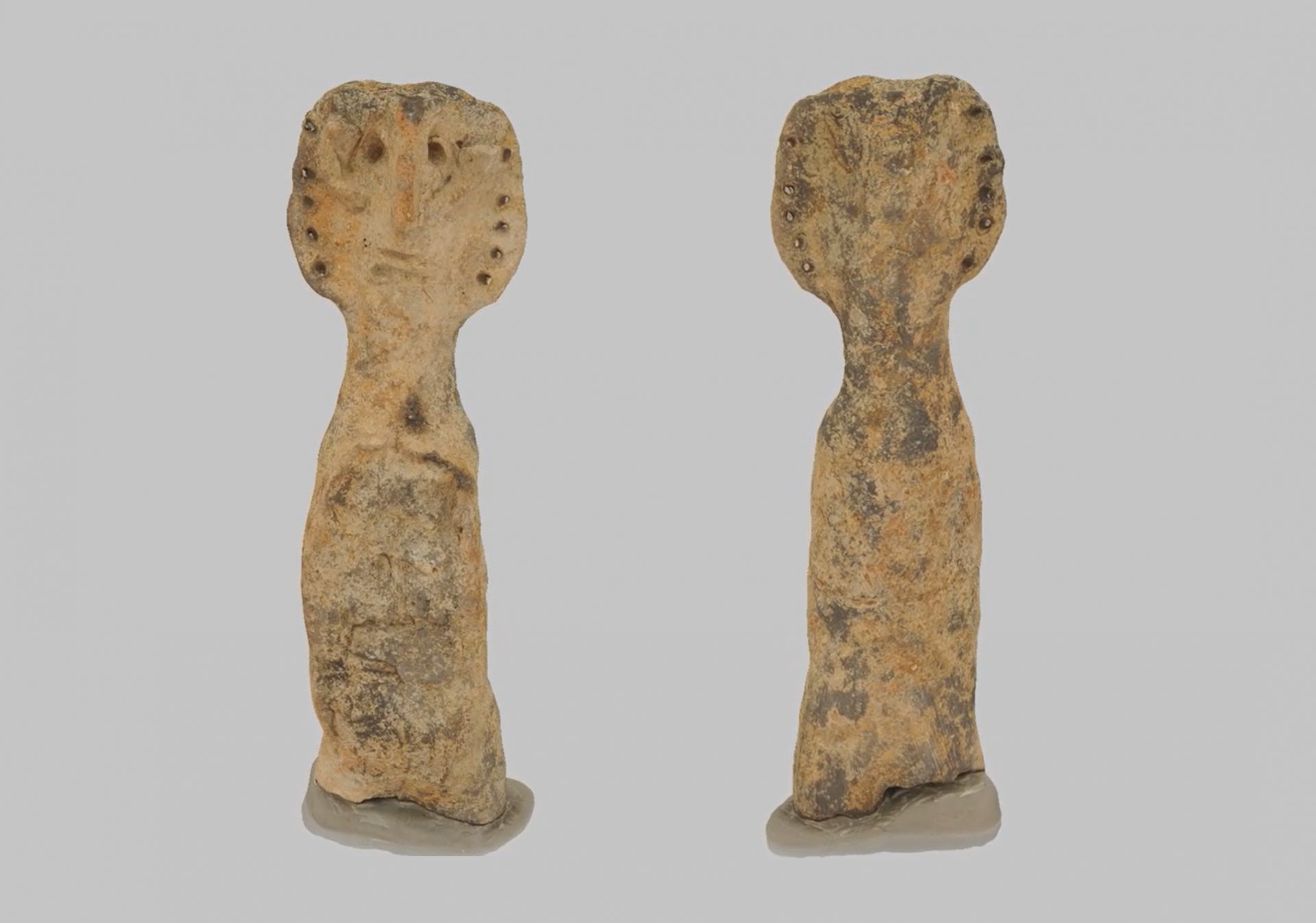Archaeologists have discovered a unique clay figurine that may represent a prehistoric water goddess in Bavaria, Germany.
The figurine dates from the 8th to 5th century BC during the Iron Age, found in the vicinity of a Hallstatt period settlement on the edge of the Unkenbach lowland.
The Hallstatt culture was the predominant Western and Central European culture during the Late Bronze Age and Early Iron Age, named for its type-site, Hallstatt, a lakeside village in the Austrian Salzkammergut southeast of Salzburg.
The discovery was made during construction works for the Mönchstockheim bypass, resulting in archaeologists conducting a rescue excavation within a small gully, revealing the small clay figure, pieces of glass, pottery, tools made of bone and a clay stamp.
The ceramic finds show no evidence of rounded weathering caused by hydraulic action, suggesting that they were intentionally deposited in the gully as offerings. Studies date the ceramics to the 8th to 6th century BC that corresponds with the Hallstatt period.
The clay figurine stands at only 19cm tall and is missing the legs and front surface of the upper body. Each side of the head has 5 perforated holes from the height of the lower chin to above the eyeline, possibly representing a hood decorated with metal rings.
Researchers from the Bavarian State Office for the Preservation of Monuments suggest that local peoples may have worshiped the figurine as a water goddess, seeing the gully as a sacred place for ritual offerings. In any case, the figurine functioned as a cult object with a strong connection to water.
“Similar figurines made of clay are known from the western Black Sea region and date back to the 5th millennium BC. However, the other finds at our site point to a much younger dating of the figurine. All of this leaves a lot of room for future interpretation,” says Dr. Stefanie Berg from the Bavarian State Office for Monument Preservation.
Bavarian State Office for the Preservation of Monuments
Header Image Credit : Bavarian State Office for the Preservation of Monuments





